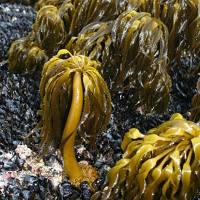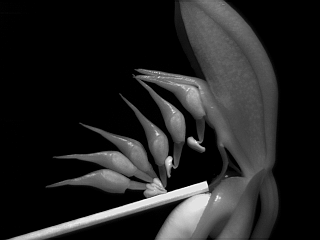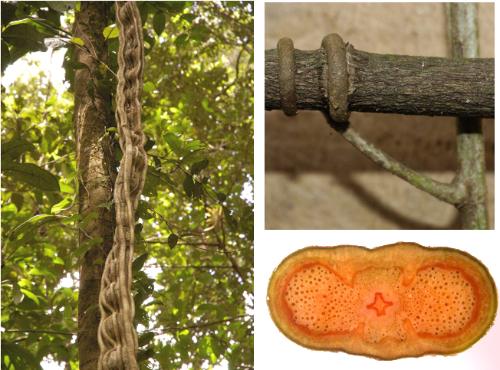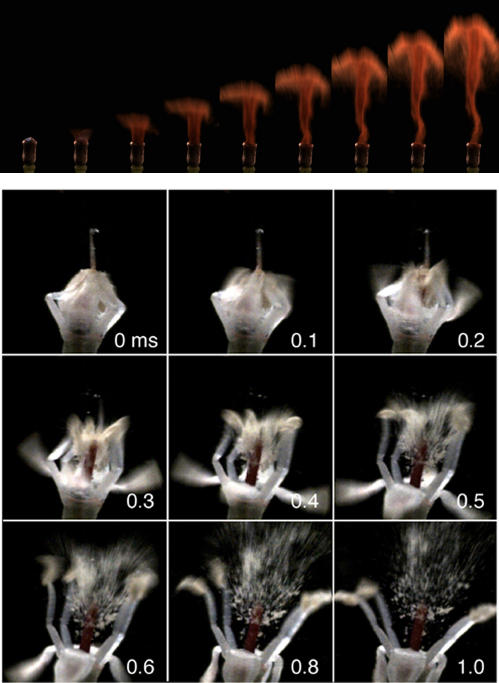SICB Annual Meeting 2010
January 3-7, 2010
Seattle, WA
Symposium: Mechanics without Muscle: Evolutionary Design of Macrophytes
 SICB originally emerged out of the American Society of Zoologists and was historically a professional association of animal biologists. But over the last several years, SICB membership has grown and diversified to include an increasing number of botanists who share the integrative and comparative mindset of their zoology counterparts. The Mechanics without Muscle symposium was organized to highlight this broadening botanical perspective with an emphasis on plant biomechanics. Symposium speakers will present a wide-range of current research endeavors from the locomotion of vines and stems to the biomechanics of pollen projectiles; from the mechanical adaptations of wave-swept seaweeds to the bio-inspiration of new materials gleaned from everyday plant tissues. Highlighting both terrestrial and aquatic research programs, the Mechanics without Muscle symposium will provide an especially broad introduction into plant biomechanics.
SICB originally emerged out of the American Society of Zoologists and was historically a professional association of animal biologists. But over the last several years, SICB membership has grown and diversified to include an increasing number of botanists who share the integrative and comparative mindset of their zoology counterparts. The Mechanics without Muscle symposium was organized to highlight this broadening botanical perspective with an emphasis on plant biomechanics. Symposium speakers will present a wide-range of current research endeavors from the locomotion of vines and stems to the biomechanics of pollen projectiles; from the mechanical adaptations of wave-swept seaweeds to the bio-inspiration of new materials gleaned from everyday plant tissues. Highlighting both terrestrial and aquatic research programs, the Mechanics without Muscle symposium will provide an especially broad introduction into plant biomechanics.

A composite image showing the firing of the pollinarium (pollen bearing structure) in the orchid Catasetum tabulare. The transfer of energy for the fast release of the pollinarium as well as the precise targeting of the pollinarium have finally been elucidated, one century after Darwin described the genus as “the most remarkable of all orchids”. (Picture by Daniel Fulop and Jacques Dumais)
Funding for this symposium was provided by the Division of Comparative Biomechanics at SICB.
Objectives
The primary goal of this symposium is to highlight current questions in plant biomechanics research. But we hope these presentations inspire young SICB members and motivate other plant enthusiasts to present at SICB in the future.
Organized by: Patrick Martone
Schedule
Monday, Jan. 4, 08:15 Martone, P. Introduction. “Plants are like sharks, only greener”
Monday, Jan. 4, 14:30 Martone, P. Closing Remarks

Climbing plants and lianas are important elements of tropical rain forests. Their specialized mode of growth requires highly derived developmental and biomechanical traits compared with their hosts. Some species such as this species of Bauhinia (Caesalpiniaceae) from French Guyana develop a highly modified geometry (ribbon-like stem) and profound changes in material properties (stiff to flexible) enabling attachment and then long term survival in the forest canopy.

The explosive blooming of a bunchberry flower (Cornus canadensis) filmed at 10,000 fps. The stamens function as trebuchets flinging pollen into the air or onto a visiting insect.
Photo Credit: Alejandro Acosta, Joan Edwards, Marta Laskowski, and Dwight Whitaker

